Winnie was the first whale I ever saw in the flesh – or perhaps that should be “in the blubber”?
Not that my four-year-old brain had any concept of size back then, but Winnie was a 14.5ft long killer whale, weighing a little under 2 tonne. She performed up to seven times a day in the Windsor Safari Park dolphinarium pool, which was 85ft long, 46ft wide and 11.5ft deep.
When she wasn’t entertaining the “Great” British public, Winnie was kept in a side pool that was just twice her length (32ft long, 25ft wide and 9.5ft deep).
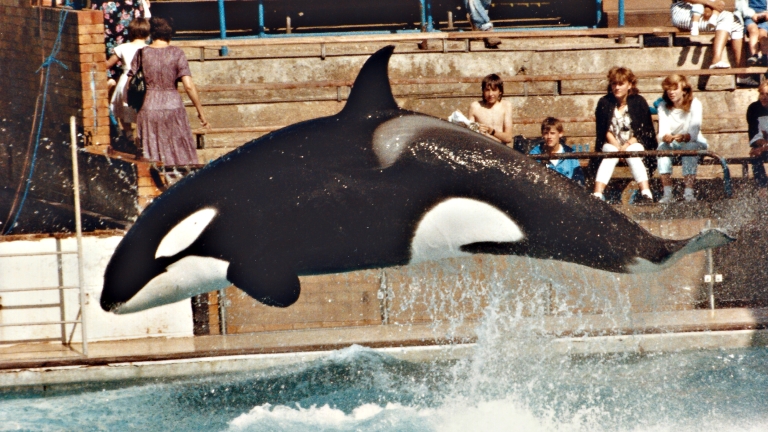
The notion that it was inhumane to hold such a large, wild animal in such a small enclosure was also lost on my naive mind – as it probably was on those of many Brits in the 80s.
We didn’t need to jet off to Florida or California to see the infamous Shamu show at SeaWorld; we had Windsor Safari right on our doorstep. And the chance to see a real whale, in person, was one that couldn’t be missed. Seeing a whale was a dream.
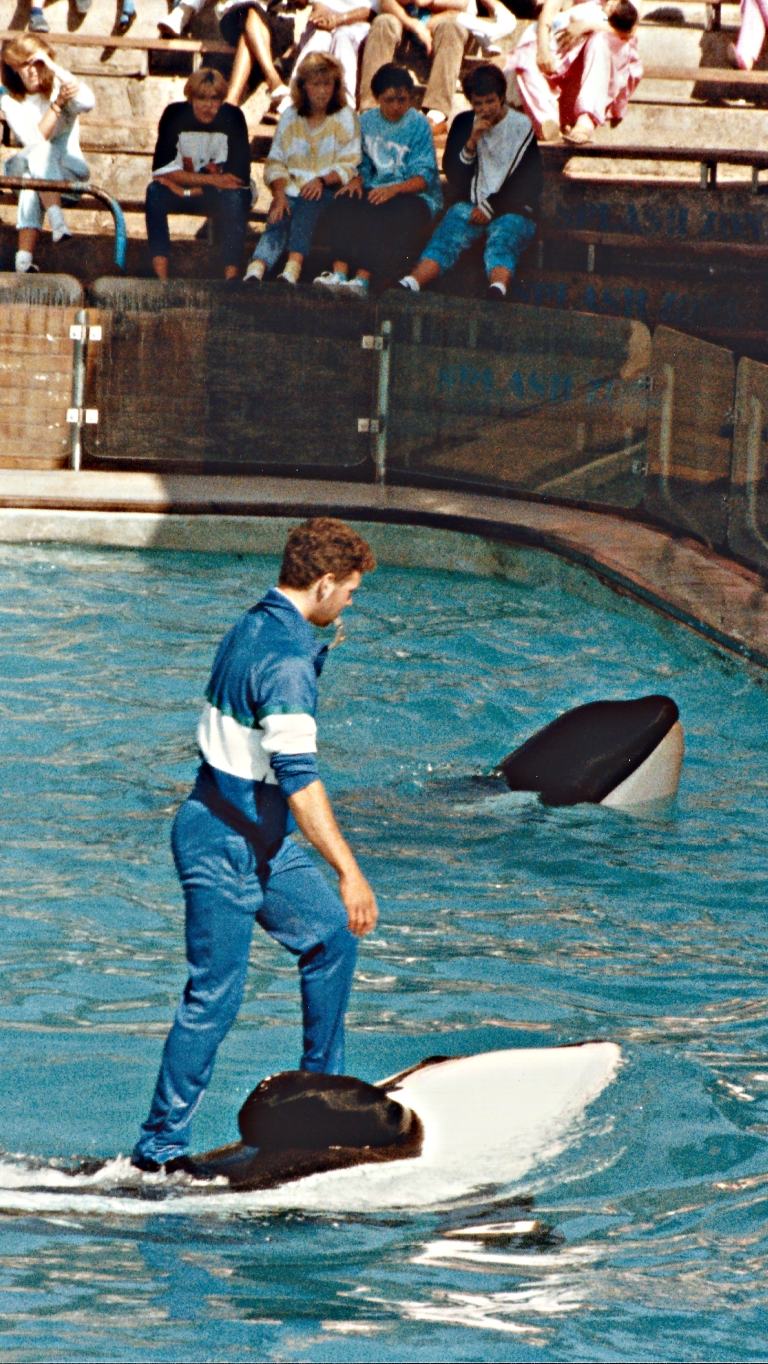
Captive killer whales: dying to entertain us.
Half starved (unbeknown to me at the time) and “rewarded” with buckets of fish, I watched Winnie respond to whistled commands from her trainer: she swam the perimeter of the pool, flicked a football, gave the trainer a kiss, surfed the trainer from one side of the pool to the other, waved goodbye to everyone, then came back as an encore to splash those sat in the Splash Zone with a predictable-but-still-surprising belly flop.
There were cheers and clapping, then we left. Herded into the gift shop, I was allowed to pick one souvenir – I chose a small Winnie stuffed toy.
Though I still have my Winnie toy nearly 30 years later, my memory of her performance is hazy. I don’t remember how many people sat on the benches watching the show with me that day – but reading up on the history of Windsor Safari Park while writing this post, I doubt it was many.
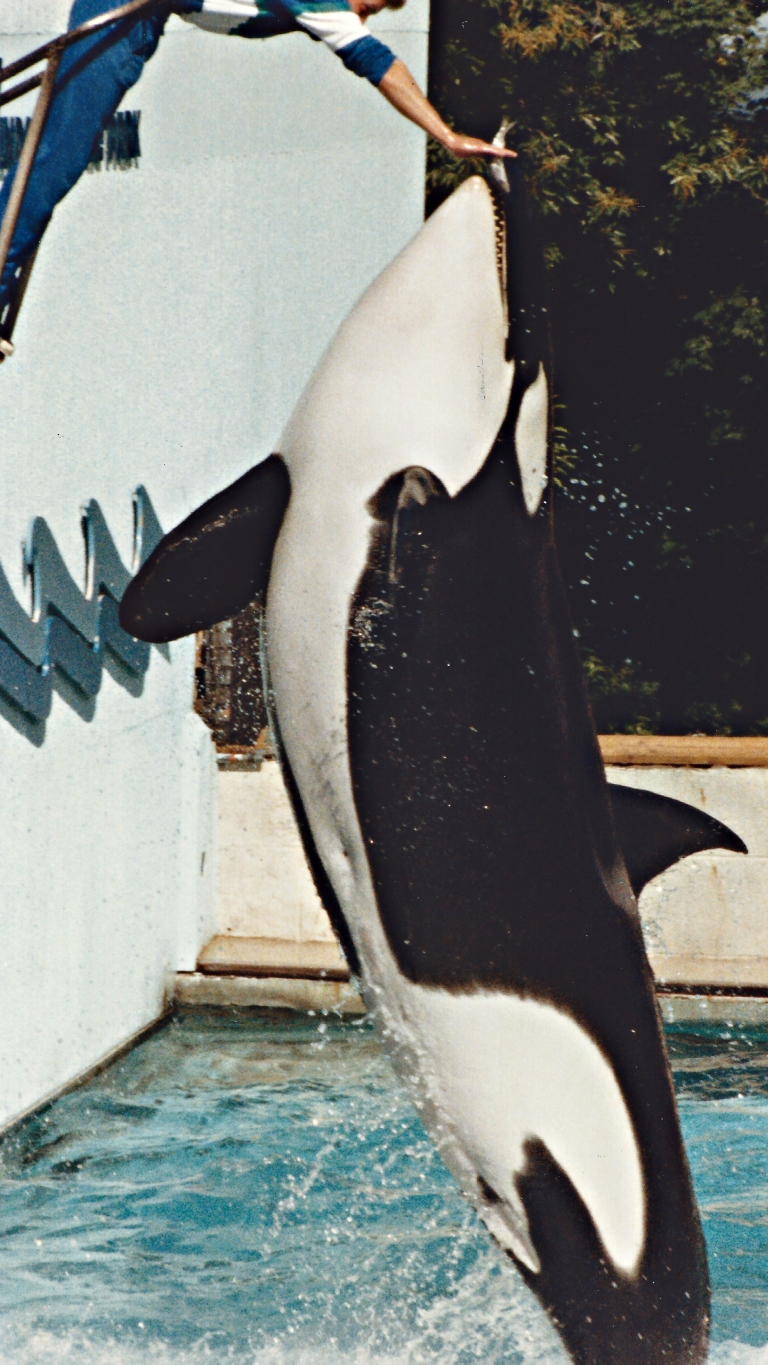

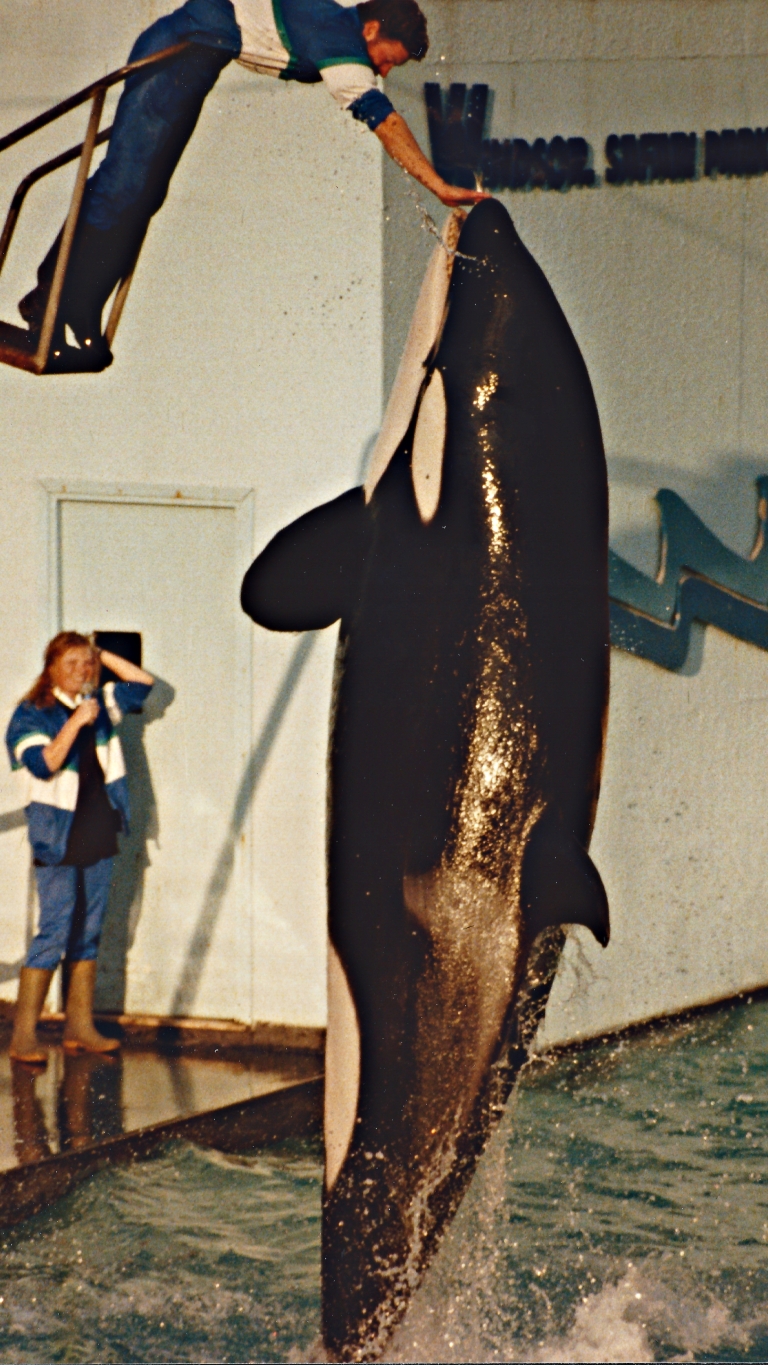
The beginning of the end for Windsor Safari Park.
Originally opened in 1969, visitor numbers to the Park had been dwindling since the mid 80s. More and more families holidayed abroad during the summer months, and those that didn’t chose days out at amusement parks over zoos and safaris.
Mounting pressure from animal activists and Greenpeace lobbyists didn’t help the situation either.

Sensing the cultural shift, local rival Chessington Zoo began building a shiny new addition to meet the demand: a £12million state-of-the-art theme park. Chessington reopened on 7 July 1987 (coincidentally, at the same time as the M25 motorway opened) with a name change: Chessington World of Adventures.
Windsor Safari Park could not compete. And following the success of animal rights campaign “Into The Blue”, the UK government made standards of care for marine mammals in captivity so stringent, no dolphinarium in the country could afford to meet them. So, one by one, they shut down.
The UK’s last dolphinarium was Windsor Safari Park.
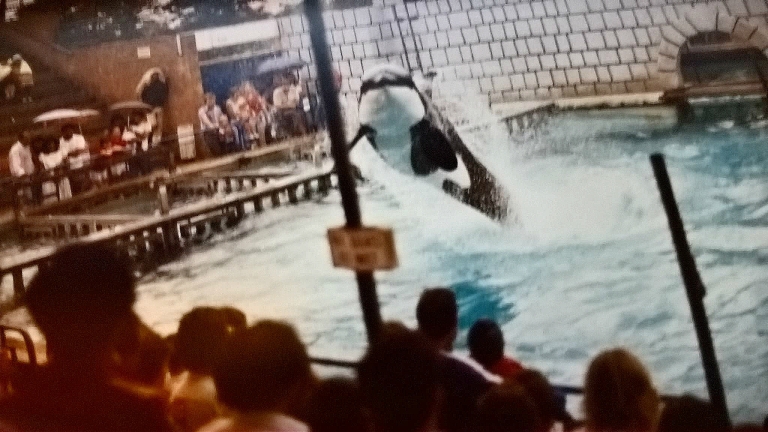
The strict new regulations about the size of pools meant star attraction Winnie – who had resided at Windsor since 1977 – had to find a new home. The Park didn’t have the funds to extend her enclosure, so she was shipped to SeaWorld Orlando in 1991.
Unfortunately Winnie’s tragic life didn’t get much better across the pond; the submissive orca was bullied by younger whales that were much bigger than her. Experts said that being kept in such a small pool in Windsor had stunted Winnie’s growth during her early years, though she did gain some weight in the US (doesn’t everyone?).
Winnie sadly passed away in 2002; a necropsy found that she’d consumed over 12lb of indigestible debris (including British coins and broken tiles from the tank in Windsor) during her 26 years, which caused her intestines to become blocked and stop working.
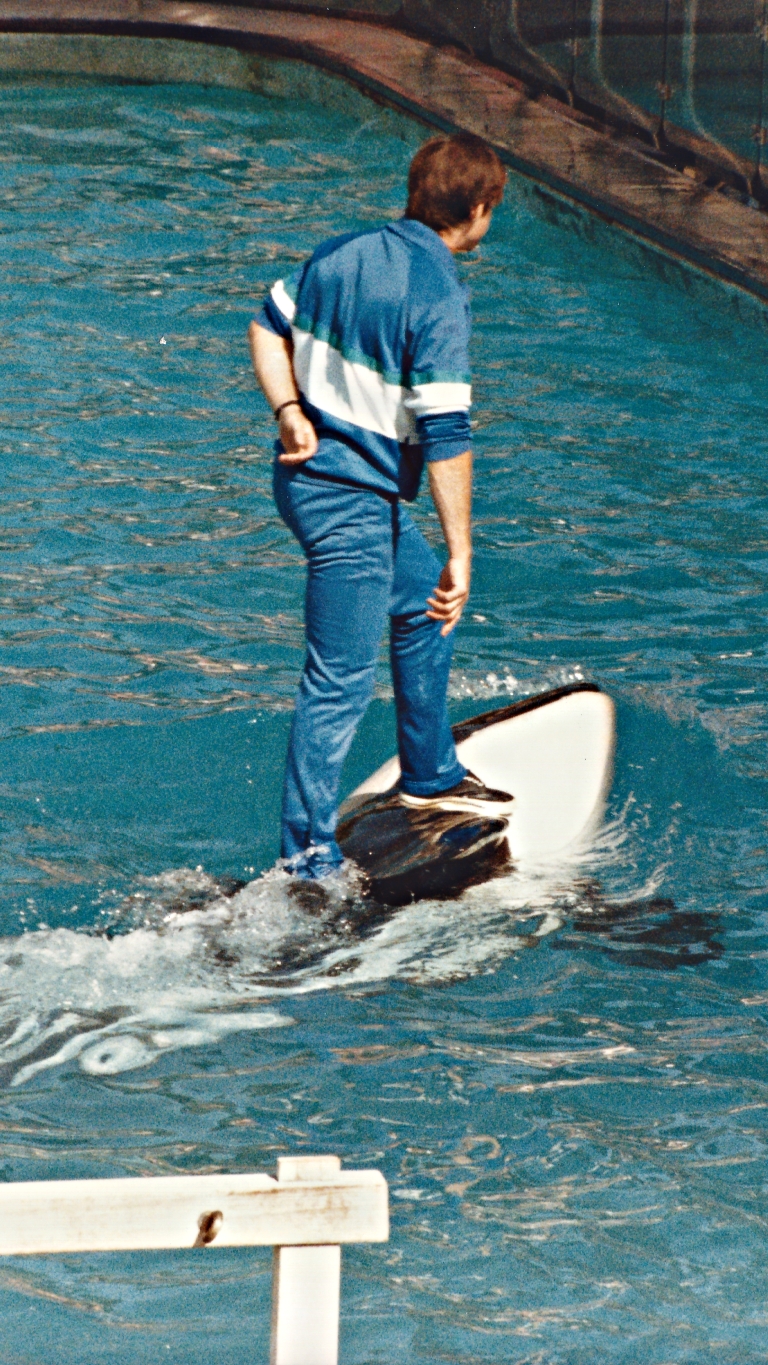
What happened to Windsor Safari Park?
Well, without Winnie there were no visitors, and without visitors there was no money coming in. The Park opened its gates for the last time on Sunday 25 October 1992, and was then taken into receivership the next day. Its owners owed debts of £40million, and without a benefactor willing to swoop in and give the Park a vital cash injection, it closed indefinitely.
Some of the animals – which included 34 lions, seven elephants, 45 baboons, seven tigers, 13 wolves and eight dolphins – were rehomed at other zoos and safari parks around the UK. Sadly, however, newspaper coverage at the time reported that the animals that couldn’t be rehomed (because of old age or illness) were euthanised. With no dolphinariums left in the UK, Windsor Safari Park’s dolphins went to the Netherlands.
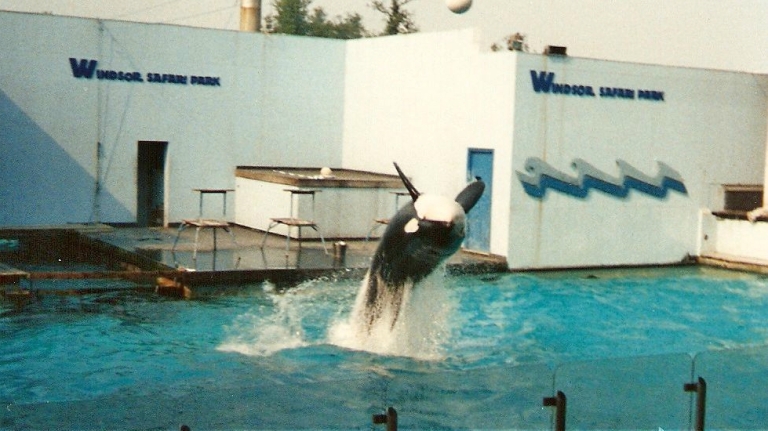
Fast forward four years and the gates to the Park were once again open, though in an entirely new guise. The animals that once lived there were forgotten, and the whale shows that had entertained families for over three decades were a distant memory. Windsor Safari Park had been completely redeveloped into, what is now, the UK’s most visited theme park: Legoland Windsor.
The only animals on display now are those made from colourful, plastic bricks – proving that the British public don’t want or need performing orcas and marine mammal acrobatics as a form of entertainment.

*****
I’m from a family of animal lovers. I grew up surrounded by dogs, cats, rodents, fish and birds (there are currently chickens and turtles at my parents’ house, too).
While my school pals idolised pop stars and watched Byker Grove, Grange Hill and the latest Disney movies, I was watching The Animals of Farthing Wood, Animal Hospital and films like Ring of Bright Water. When I was older I wanted to be Michaela Strachan or Virginia McKenna, rescuing and rehabilitating animals. As mentioned in a previous post about the charity Save a Gato, I even named my first pet – a little white kitten – after Elsa the lioness from the Born Free trilogy.
Another childhood favourite was Free Willy; I wore the VHS out watching it over and over. Even now as an adult, the fictitious story of Jesse’s commitment to helping his 4.5 tonne (notice the difference in size between him and Winnie) cetacean friend escape captivity and return to the open ocean has me on an emotional roller coaster, with tears of joy and sadness interspersed with feelings of anger and triumph.
The end scenes of Willy swimming freely with a pod of wild killer whales have stuck in my mind for over 20 years. Ever since I first watched the film, going whale watching to see these magnificent creatures in their own environment – not just from the confines of what amounts to a giant bath tub – has been on my bucket list.

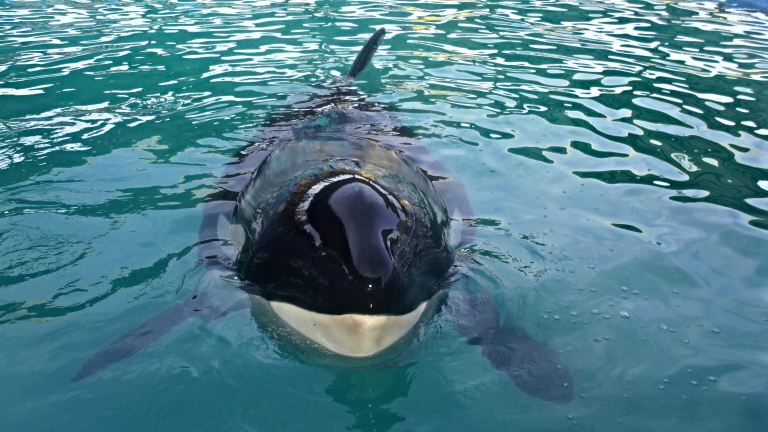
From bath tub to bucket list.
Though I’ve never been to an official SeaWorld park (and have now vowed I never will), in 2009 my parents and I visited Miami Seaquarium on a family holiday to Florida. I do recall niggles of guilt at the back of my mind for being a person who paid money to keep a 22ft long orca in a tank, but the presenter did a great job in convincing everyone that the huge mammal was happy and content. So I watched Lolita the killer whale splash around her pool entertaining the visitors, reminiscing about my childhood trip to Windsor Safari Park.
It’s only as an adult, as I read and learn more and more about travel and the tourism industry, that I truly understand what animals in captivity go through, and how our entertainment is so often at the expense of the animal’s health and mental well-being. Last year for example, as Hurricane Irma ravaged the US East Coast, drone footage emerged of an abandoned Lolita, left alone and exposed to the elements, with no shelter from falling debris. My anger at Miami Seaquarium, and my own remorse at having visited somewhere that treats animals so inhumanely, is insurmountable.
Bad enough that captive orca exist, but unlike other animals they can’t be evacuated during #Irma. Barbaric that Lolita has been abandoned. pic.twitter.com/jDLbIq9lw3
— Anna MacLaughlin (@AnnaGraceMac) September 9, 2017
Recently I watched a documentary on the real Free Keiko story and found out about the Free Willy-Keiko Foundation set up by Warner Bros. If you’re interested, you can watch the documentary here, but word of warning, have tissues at the ready.
But it was an unpredictable and overwhelming documentary on Netflix that I watched in 2013 that really changed my mindset:
The “Blackfish effect”.
Low-budget documentary Blackfish had a far greater impact than its producers and director ever thought it would. It opened the public’s eyes to the way captive killer whales (and other cetaceans) are treated, housed and cared for.
The film drew wider attention to Dawn Brancheau’s death in 2010. Dawn was SeaWorld’s most experienced trainer, working with Tilikum, the company’s biggest killer whale (and the largest captive orca in the world until his death in January 2017). During a routine show she was pulled into the water by 6.7 tonne Tilikum and drowned, while a traumatised audience looked on. Blackfish revealed that Dawn’s was not the first death linked to Tilikum, however. If you haven’t seen it, the documentary is available on Netflix and well worth a watch.
After the film’s release in June 2013, mounting protests against the holding of orca in captivity, an overnight drop in share prices and the continued decrease in visitor numbers saw SeaWorld report a loss of $25.4million in the fourth quarter of that year. And as of January 2017, SeaWorld’s shares have dropped by half since 2013.
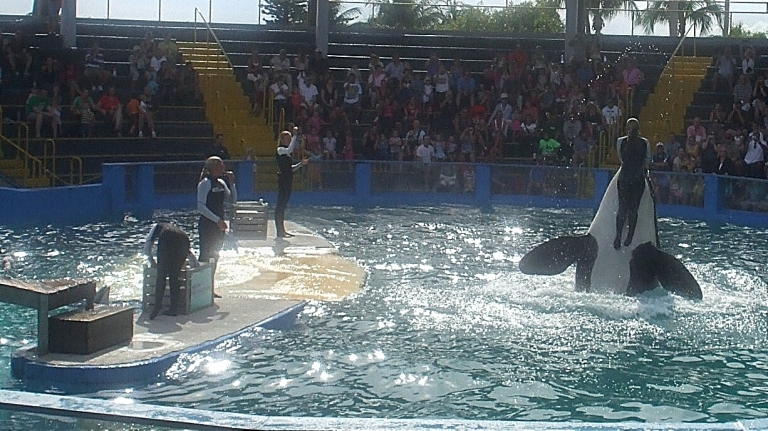
While the downturn of the American institution’s fortunes can almost entirely be ascribed to Blackfish, SeaWorld has responded to public pressure. In March 2016, it announced it would end its orca breeding programme, making its current captive killer whales “the last generation of orcas in SeaWorld’s care”. In an attempt to rebrand from an entertainment company to a conservation company, it also announced it would be phasing out the daily theatrical performances and introducing “new, inspiring, natural orca encounters, focusing on orca enrichment, exercise and overall health.”
It hasn’t just been SeaWorld which has been caught up in the “Blackfish affect”, though. Other businesses in the tourism industry have also responded to the public backlash; in July 2014, Southwest Airlines stated it would not be renewing its partnership with SeaWorld. And most recently, (my favourite) British travel company Thomas Cook announced it would stop selling tickets to SeaWorld as part of its holiday packages.

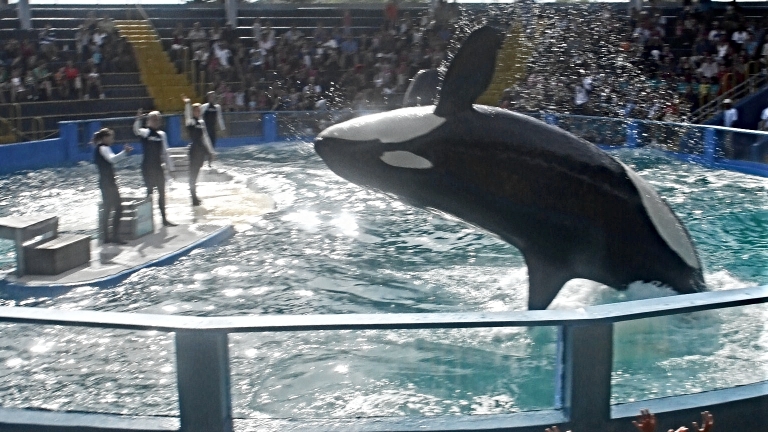
Like many others that have watched Blackfish, I have vowed firmly to never again pay to watch whales, dolphins and other marine animals perform.
My dreams of seeing these majestic creatures in their natural environment are very much still alive, though. And through everything I read about various species becoming endangered (or worse, extinct in the wild), I’m even more determined to tick whale watching off my bucket list, before it’s too late.
In fact, it very nearly happened earlier this year. When I was in Iceland at the end of March, I went on a whale watching boat trip with Special Tours. But that’s a post for another day…
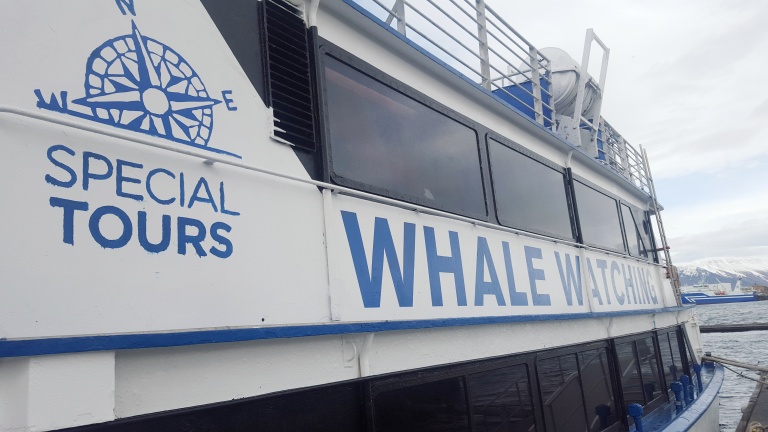
*****
Note: Windsor Safari Park photos in this post have kindly been shared by Norman Griffin, Barbara Todd and Colette Buchanan-Grey, and were all taken between 1982-89. Miami Seaquarium pictures my own, regrettably.

Thank you so much for further highlighting the issue of animal captivity. I remember visiting SeaWorld San Diego a few years ago, and I vividly remember the bitter taste that this visit left in my mouth. The way the whales and dolphins were taking advantage of just to entertain the shouting crowd was too much for me to digest! Since then I’ve never set foot in a zoo or aquarium.
LikeLiked by 1 person
Sounds like very similar feelings to my own Chad 😦 thank you for your comment x
LikeLike
These photos are breathtaking, but the situation is so sad, and unfortunately it’s still a huge problem in todays world!
LikeLiked by 1 person
Unfortunately, yes it is 😦 x
LikeLike
I am all for animal rights for sure but I do enjoy the experiences of learning and watching animals in places like zoos or aquariums. I think it comes down to guidelines that should be followed on how animals are treated and if parks closed they should still be placed where they’re taking care of. I think their can be a compromise so that families being entertained can still enjoy some spectacular while not having any animals in danger.
LikeLiked by 1 person
Thanks for your comment Chastity – appreciate you taking the time to share your view. I don’t necessarily agree with you, but I don’t disagree either. But I do think that there are better ways to educate children about these majestic creatures other than making them watch a show with the whales performing in a tank that is the equivalent of you trying to swim in a bath tub 😦 x
LikeLike
I actually love seeing those animals in their own natural environment or habitant. Honestly, my hearts broken when I read that the Windsori Safari Park closed because of some reasons and Winnie died because of digesting inedible things from her tub. I hope all park owners follow the rules diligently and with conscience as these animals life are also important.
LikeLiked by 1 person
Thanks Catherine – I completely agree with you! x
LikeLike
i love them! your photos are so cool.
LikeLike
Such a heartbreaking story…Thank you for shedding light on this important story. It is so important to preserve and protect these animals and their homes.
LikeLiked by 1 person
Thanks Catherine – feel free to share the post to further highlight the issue with your friends and family x
LikeLike
I was not aware of Windsor safari park closure until just recently we visited Legoland I reconised the old open aquariam where the submarine sealife is
Now it brought back so many good memories of my childhood, I cannot thank you enough for those memories I am grateful.
LikeLike
I have a never been to an aquarium performance and now I think I never will. I can’t believe they found so much trash and coins inside of that poor orca! The only dolphin watching we will be doing is out on a boat in the ocean.
LikeLiked by 1 person
I’m so happy to hear that my post has persuaded you not to visit aquariums and SeaWorld parks Jimmy 🙂 x
LikeLike
This post is so heartbreaking – and as a child I also visited a similar park here in Canada. As a kid and back in the late 80s/early 90s the awareness just wasn’t the same. I won’t ever support a marine park like this in my life again, but also hope I can see these animals in their own natural habitats.
LikeLiked by 1 person
It seems many children growing up in the 80s/90s were taken to parks like this 😦 and yes, back then there just wasn’t the awareness that there is now 😦 x
LikeLike
I have been to zoos and safari but never watched an aquarium show before. 3 weeks ago I and the husband brought my mom and my in-laws all in their late 60’s to an open safari and it was their first time to see a tiger, giraffe, leopard, cheetah, those beautiful birds, monkeys and a lot more. These are what they said “I never thought in my entire life to see such animals, I thought I can only see them in books or tv” all of them teary-eyed. I think Zoos and safari are great as long as strict guidelines are being imposed and followed.
LikeLiked by 1 person
Ahhh it sounds like your in-laws had an amazing experience! x
LikeLike
Animals in captivity suffer a lot – be it in a zoo or anywhere else. I commend your effort that you have tried to bring forward this issue. Just before reading this post, I was reading a newspaper article about a tiger being killed in India. I was appalled by the news. It is always important to protect the animals in their natural habitat. Hope people understand that someday.
LikeLiked by 1 person
That’s shocking! Do you have the link to the story, I’d love to read it and share it x
LikeLike
Its inhuman to captivate animals in enclosed spaces for entertainment. I am with you on that. Sad to hear about Dawn’s story, I never knew that trainers get killed so frequently.
LikeLiked by 1 person
It’s really sad isn’t it – and something SeaWorld tried to cover up for a long time! If you Google, you find all the details about everyone who’s been hurt, harmed or even killed by a whale x
LikeLike
This is certainly one of those posts that make you think. Those poor whales, Isn’t it funny how times change and we go from being so excited about this display to realising actually that they are suffering for our viewing pleasure and so fighting for a change.
LikeLiked by 1 person
Society has gone full circle, that’s for sure! x
LikeLike
This act should be stopped. Animals are not made just to played by a human being they should be loved and cared by us.
LikeLiked by 1 person
Or even better, left in the wild where they belong! x
LikeLike
That is a really heartbreaking story. I love visiting zoo’s and safaris and sad to know why Windsor Safari Park is closed. It is really important to follow the guidelines for the sake of the animals. and sad to hear about what happened to Dawn.
LikeLiked by 1 person
Do you still think you’ll continue to visit Zoos and Aquarium parks like this? Now knowing that the animals are suffering? x
LikeLike
Thank you for bringing much needed awareness to this topic. It’s one of those things that people either don’t realize, or don’t want to think about, and your post is helpful in educating people! My heart breaks for suffering animals.
LikeLiked by 1 person
I do think for many it is a case of burying the head in the sand, so they don’t have to think about it 😦 x
LikeLike
I agree that the best way to see animals is in their natural habitats. It’s so sad to see that some of the animals are treated carelessly and they suffer.
LikeLiked by 1 person
Yes – leaving animals like this in their natural habitat would definitely be for the best! x
LikeLike
I was one of those who as a kid and adult loved to see Shamu at Sea World. I knew there was some backlash, but didn’t know much about it. So much of this is so sad to hear. What’s hard also is when a baby whale is born into this, it’s very difficult for them to then survive out in the wild.
LikeLiked by 1 person
Yes, taking the infants away from their mothers is just heartbreaking 😦 x
LikeLike
Heartbreaking. Just heartbreaking.
I do have to say that I loved seeing all of your old photos. It made this article beautiful despite the heartbreak.
LikeLiked by 1 person
The old photos just go to show how small the tank was, and the conditions Winnie was kept in 😦 c
LikeLike
I had mixed emotions reading this post, keeping animals captive saddens me but at the same time, I would have loved to see such a majestic animal in person. I also loved your sharing and photos of your visit when you were young.
LikeLiked by 1 person
I think there is a far bigger problem in America – Beagle testing! 60,000+ Beagles are crewly tested on every year for your shampoo, moisturiser, soap etc. They have shampoo ladened sponges rubbed in their eyes to see the effect. Many have their eyes gouged out and then are carried on tested on. How disgusting! These are loving, adorable, TRUSTING animals who undergo despicable suffering for YOU. Watch videos on what they do to these gorgeous animals and do something about it. Don’t burry your head in the sand and ignore what is happening in YOUR country.
LikeLiked by 1 person
Not sure how this comment relates to my post about captive whales – but thanks for sharing your feelings 😀
LikeLike
On June 5th 1983 I saw Winnie perform at Windsor Safari Park. Prior to her show my 10 year old Brother and I were able to walk into the enclosure. There was no one there, no staff and no people. Winnie was in the main pool and surprisingly surfaced bobbing her head out of the water right next to me. She was so graceful and gentle and allowed my brother and I to smooth her nose. She repeated this quite a few times submerging and then popping back up to us. She then submerged and was gone.
That day will remain in my mind and heart forever. My experience was amazing and so unexpected. However like you, although a young adult, something just wasn’t right. I didn’t rationalise it immediately but seeing this beautiful animal held in such a small pool left me with a sadness I still carry with me today. There was some sort of connection, whether it was her looking for food or just something to do I’ll never know. For me it was so special.
Thank you for this article, I always wondered what happened to Winnie. Now I know and am still saddened.
Shame on all those removing such beauty from its natural environment in the name of entertainment. And shame on those who sill perpetuate this bad practice by visiting these parks and funding captivity.
LikeLike
really helpful article thank you for sharing
LikeLike
Thank you for this wonderful article. This is actually the second time I’ve read it because although it makes me so sad, I love learning about Orcas, and partly how far we’ve come! It gives me hope that one day there won’t be one Orca in captivity.
LikeLike
A bloke starts his new job at the park and is given three tasks. The first Is to clear the exotic fish pool of weeds.
As he does this a huge fish jumps out and bites him.
To show who is boss, he beats it to death with a spade. Realising his employer won’t be best pleased he disposes of the fish by feeding it to the lions, as lions will eat anything.
Moving on to the second job of clearing out the chimp house, he is attacked by the chimps who pelt him with coconuts. He swipes at two chimps with a spade killing them both. What can he do?
Feed them to the lions, he says to himself, because lions eat anything. He hurls the corpses into the lion enclosure.
He moves on to the last job which is to collect honey from the South American bees. As soon he starts, he is attacked by the bees. He grabs the spade and smashes the bees to a pulp.
By now he knows what to do and shovels them into the lions’ cage because lions eat anything.
Later that day a new lion arrives at the zoo. He wanders up to another lion and says, “What’s the food like here?”
The lions say: “Absolutely brilliant, today we had Fish and Chimps with Mushy Bees”.
LikeLike
I went to Windsor safari in about 1970 aged 7. I can’t remember the show but I have a post card I got at the time. Think that’s when I first got to love these beautiful creatures. I know now it’s not good to keep animals in captivity but I think a lot of people from my age have now got behind the animals and are doing the right thing by them. These early zoos and to an extent zoos of today give us a first look at the wildlife around us that most would never see and hope will move more people to look out for them. I think seeing these animals shows us they are real and not just something on tv. I would love to see orcas in the sea and I’m sure one day I will and take my boys to show them the wonderful life we have on this plant.
LikeLiked by 1 person
Oh My Goodness. I saw Winnie once when I was about 8 or 9 in the early 80’s. She left a lasting impression on me, I thought she was amazing. I had no understanding of her life and situation. I feel so sad at what happened to her after the park closed, almost feel like she should have stayed there. So sad. Thank you for telling the story, I always wondered what happened to her. You have really struck home with the bath tub comment. How can we be so cruel to these barely understood animals.
LikeLiked by 1 person
Thanks for your comment Natalie – I’m glad my post has resonated with you, but sad that it’s about this topic.
LikeLike
Vergogna, sono animali meravigliosi ed intelligentissimi…stop a zoo e delfinari!!!!gli animali devono stare liberi!!
LikeLike
I also still watch free Willy and I am 31 since the age of about 5 I wanted to see Orca but I vowed at the age of 9 I would never go to an aquarium or zoo (which I have stuck to) however I do plan on hopefully free diving with an Ireland pod in the future the things behind the scenes of the flashy shows is disgraceful the orcas and dolphins especially find themselves chewing on concrete, self mutilating, starvation depression then like all that wasn’t bad enough they spend most of their time with a cocktail of drugs in their system while also having a high risk of twisted intestines which rapidly kills them
LikeLiked by 1 person
Thanks for taking the time to write this comment Sarah – it’s great to hear how you’ve stuck by your vow 🙂
LikeLike